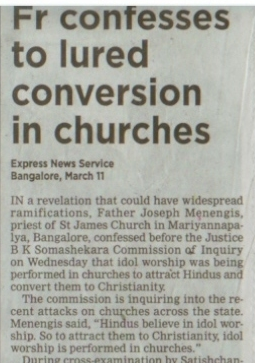According to the Joshua Project, the 10/40 window is home to people where the gospel has to be preached. The goal of this project is to share information to “encourage pioneer church-planting movements among every ethnic group and to facilitate effective coordination of mission agency efforts.” Or in simple words, facilitate conversion in Islamic countries, India, China and other minor countries in the neighborhood.
Ever since Roman Emperor Constantine legitimized the Jesus movement and converted to Christianity in his death bed, the religion expanded in a major way to change the West forever. There was a similar opportunity for Christians in the 13th century to convert Kublai Khan. If the Khan had converted, during the time of Mongol dominance (see map), the religious map of China and Mongolia would have made a Joshua Project volunteer smile.
The Khan did not hate Christians; in fact he had great respect for them. He was always curious about Christian kings and princes and wanted to know more about the Pope and how how Christians worshiped. When Niccolò and Maffeo (Marco Polo’s father and uncle) were returning back to Venice after their first visit, the Khan sent a letter to the Pope with them. It was a challenge. He wanted the Pope to send a hundred missionaries prepared to proselytize. These missionaries had to reason out that their faith was superior than others. If the Khan could be convinced he was ready to become a man of the Church without renouncing the Mongolian religion. He also wanted the Polos to get him the oil from the Church of the Holy Sepulcher, believed to have great healing powers.
The Polos gave Khan’s letter to the newly elected Pope Gregory X who could only spare two Dominican monks instead of the hundred. With the oil, the two Polo brothers, along with a 17 year Marco Polo and the monks, started their journey to the Khan’s court. The monks dropped out in the middle of the journey due to fear, but the Polos reached the Khan’s court near Beijing and the Khan treated the oil with respect (the same way he would treat relics from Sri Pada)
Kublai Khan was once challenged by Nayan Khan, his uncle, who was a Nestorian Christian. In this power struggle, Nayan fought under a standard which displayed the “Cross of Christ”, but he did get any visions like Constantine during the battle of the Milvian bridge. Nayan lost and was killed as per Mongol custom – by wrapping in a carpet and dragged around violently – so that blood is not spilled. Following this when various people made fun of Nayan’s Christian faith and Holy Cross, Kublai Khan differentiated between Nayan’s treachery and his faith and ensured the Christians that they will not be persecuted for their religion; he did not behave like the 15th century Spaniards and 17th century French.
Actually Kublai Khan’s mother, Sorghaghtani Beki, was a Nestorian Christian. So you would think that she would influence him to convert. Even though she was a single parent, she made him appreciate Buddhism, Taoism and Islam besides Christianity. It was probably a wise thing to do to preserve harmony in the empire, but Sorghaghtani Beki did it out of conviction.
Seeing the Khan’s sympathy towards Christians the Polos asked why he did not convert? He said Christianity was just another religion and nothing else. Much before Marco Polo, William of Rubruck – a Franciscan missionary – made his way to Karakorum, debating Buddhist priests and nearly dying of starvation. He finally met Mongke Khan, Kublai Khan’s brother who explained to the Friar that the God has passed various religious beliefs to people and Mongols were a tolerant folk.
Kublai Khan told Marco Polo that he found idolaters had more power – they could make wine cups float to the khan or make storms go away. Basically he was more impressed with shaman magic than the promise of an after life. He said if he converted to Christianity and if his barons asked for an explanation, he had none. He thought that embracing Christianity would weaken him and the best way to maintain peace in the empire was to be in good terms with barons.
Right now 50% of Mongolians are Buddhists and 40% don’t belong to any religion. Christians and Shamanists form 6%; Muslims, 4%.
References:
- Marco Polo: From Venice to Xanadu by Laurence Bergreen
- Marco Polo and the Discovery of the World by John Larner


